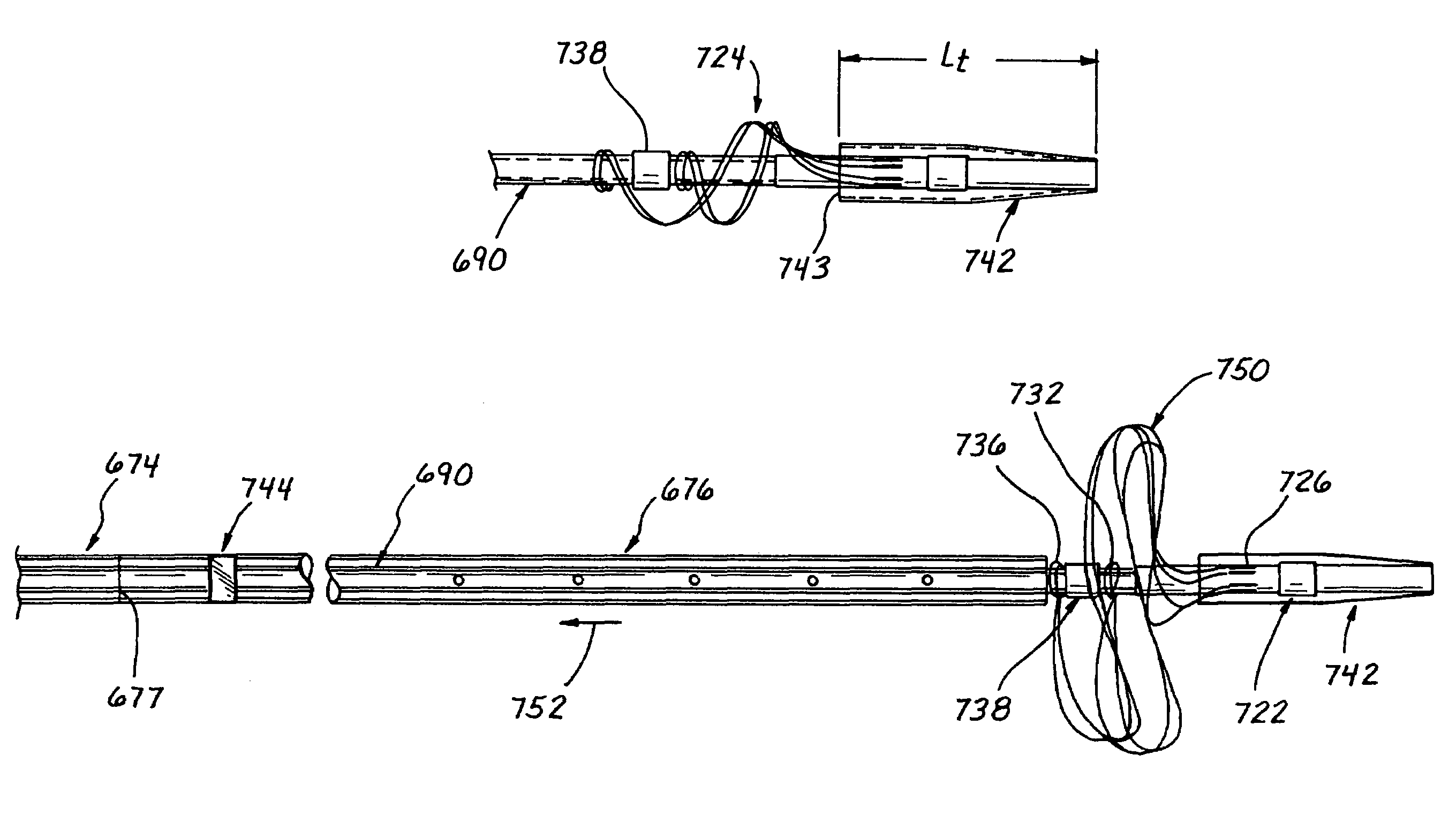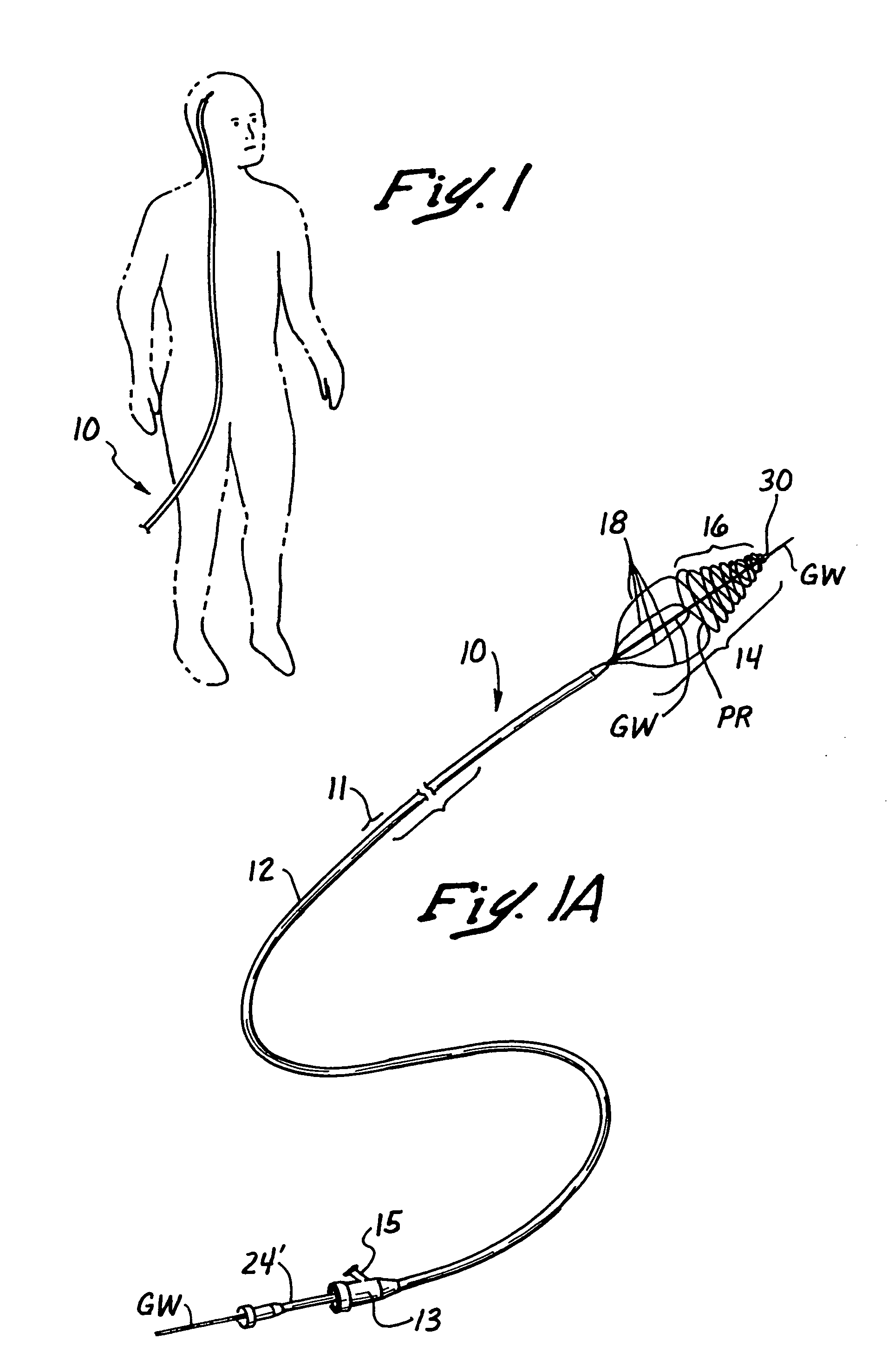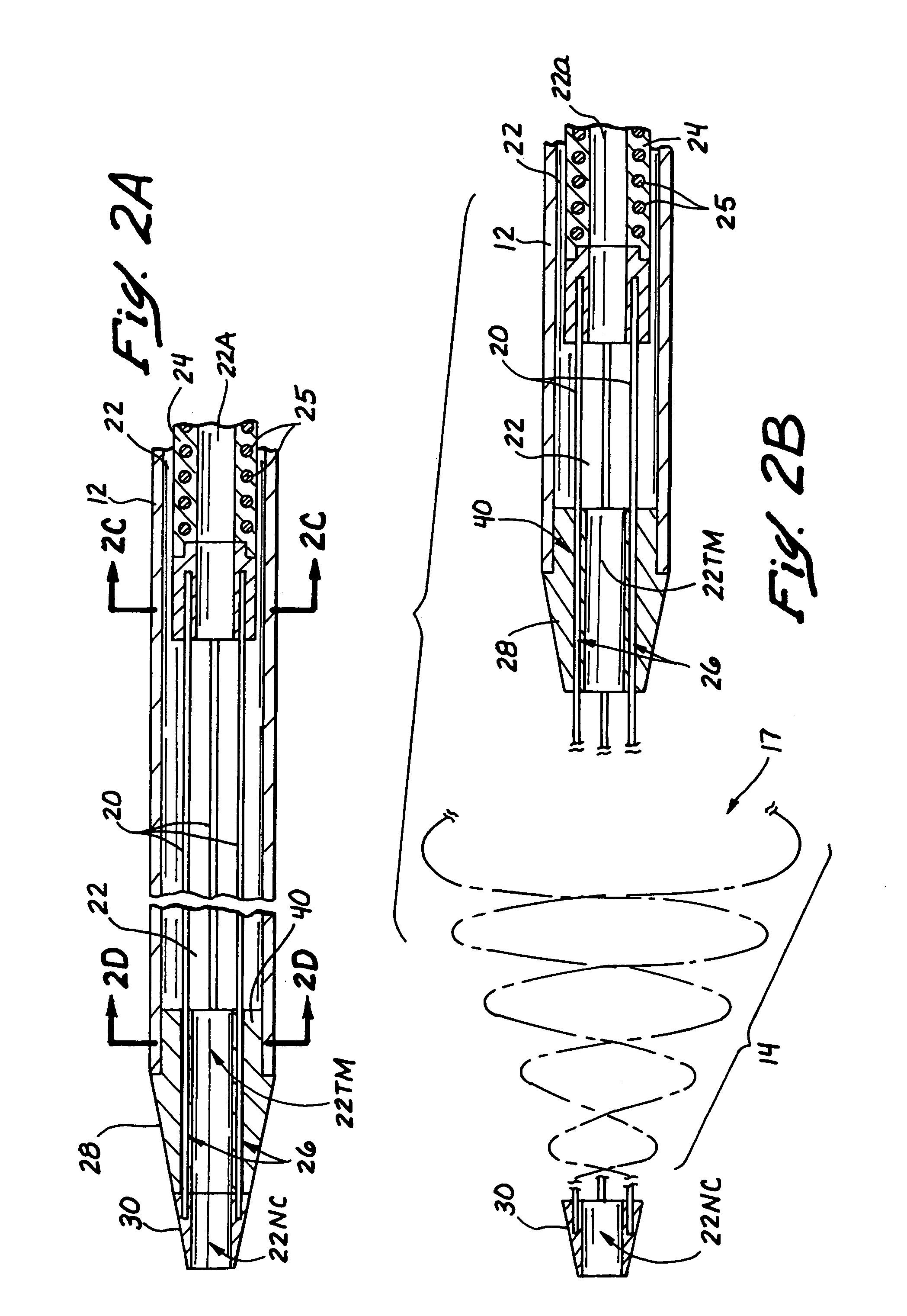Embolectomy catheters and methods for treating stroke and other small vessel thromboembolic disorders
a technology of thromboembolic disorders and emboli, which is applied in the field of thromboembolic catheters, can solve the problems of tissue ischemia, lack of available oxygen and nutrients for the tissue, and normal flow of arterial blood, so as to prevent or minimize the severity of stroke
- Summary
- Abstract
- Description
- Claims
- Application Information
AI Technical Summary
Benefits of technology
Problems solved by technology
Method used
Image
Examples
first embodiment
[0116]As shown in FIGS. 1-2D, the first embodiment of the over-the-wire catheter device10 comprises an elongate, pliable catheter 11 having a clot capturing receptacle 14 deployable from its distal end DE, as shown. The obstructive matter-capturing receptacle 14 is formed of a plurality (e.g., 2 or more) wire members 20 which are initially retractable to substantially straight configurations and a first (i.e., stowed) position, within the catheter 11. (See FIG. 2A) When it is desired to deploy the obstructive matter capturing receptacle 14, the preformed wire members 20 are held stationary while the catheter 11 is retracted, or the wire members 20 are advanced in the distal direction while holding the catheter 11 stationary, such that the wires emerge from the constraint of the catheter 11 and resiliently assume a second (i.e. operative) configuration wherein the distal portions of the wire members form a helical basket 16 having an open proximal mouth or rim 17, as shown in FIG. 2B...
second embodiment
[0121]FIGS. 3B and 3B′ show a second embodiment of an over-the-wire catheter device 10′ which differs from the first embodiment 10 in several ways. For example, the obstructive matter-capturing receptacle (not shown) of this second embodiment is formed by only two (2) wire members 20′ instead of four (4) as in the first embodiment 10. Also, the catheter 11′ of this second embodiment incorporates an elongate distal segment 270 of reduced diameter and increased flexibility—similar to that of the commercially available microcatheters (e.g., Prowler™ microcatheter, Cordis Endovascular Systems, Miami Lakes, Fla.), an example of which is shown in FIG. 3A and generally comprises a proximal portion PP having a lumen L and a distal segment 270 having a lumen 271 which is continuous with the lumen L of the proximal portion PP.
[0122]With specific reference to FIGS. 3B and 3B′, this second embodiment of the over the wire embolectomy catheter device 10′ comprises an elongate, pliable catheter 11...
third embodiment
[0125]FIGS. 3D and 3D′ show a third embodiment (i.e., a rapid exchange type embodiment) of the embolectomy catheter device 10″ which is similar in construction to the above described second embodiment 10′, but which incorporates a guidewire passage port 267′ formed in the sidewall of the catheter 11″ near the distal end of its proximal portion 12′, and a guidewire deflector tube 260′ which extends from the guidewire passage port 267′ to the lumen 22′. The guidewire deflector tube 260′ has a flared distal end which is held in a centered position within the lumen by a plurality of radial support members 264′. Longitudinal passages 266,266(alt) are formed between the radial support members 264′ to allow radiographic contrast medium or other fluid to flow through the lumen 22′, past the flared distal end of the guidewire deflector tube 260′. Selected ones of the longitudinal passages 266(alt) are larger than the others 266 to permit the elongate members 20′ which form the obstructive ma...
PUM
 Login to View More
Login to View More Abstract
Description
Claims
Application Information
 Login to View More
Login to View More - R&D
- Intellectual Property
- Life Sciences
- Materials
- Tech Scout
- Unparalleled Data Quality
- Higher Quality Content
- 60% Fewer Hallucinations
Browse by: Latest US Patents, China's latest patents, Technical Efficacy Thesaurus, Application Domain, Technology Topic, Popular Technical Reports.
© 2025 PatSnap. All rights reserved.Legal|Privacy policy|Modern Slavery Act Transparency Statement|Sitemap|About US| Contact US: help@patsnap.com



